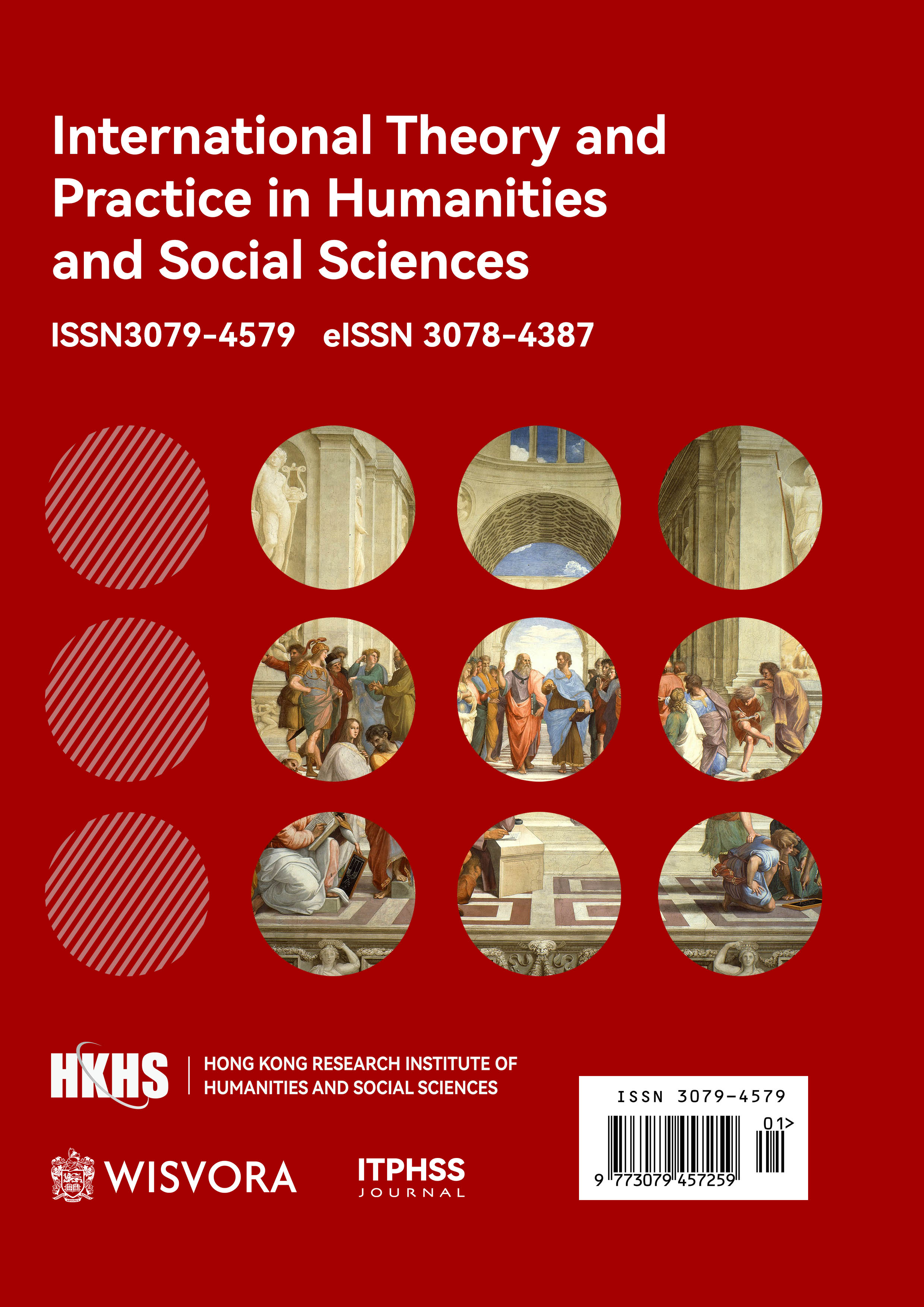Abstract
This study explores the adaptation of Brechtian drama techniques within Chinese theatrical, specifically examining how cultural values, social structures, and historical narratives are infused with Brecht’s methods to create a localized theatrical language. Through analysis of specific adaptations and performances, this research highlights how Brecht’s concepts of alienation and social critique align with Chinese cultural frameworks, offering fresh insights into the dynamics of contemporary Chinese theater. This localization process not only enriches the understanding of Brecht’s methodologies but also contributes to a distinct Chinese theatrical identity that addresses modern societal issues.
References
An, J., & Cui, M. (2023). A brief analysis of the female rebellion consciousness in White Deer Plain. Peony, 02, 24–26. https://doi.org/CNKI:SUN:MDAN.0.2023-02-008
Aristotle. (1996). Poetics (M. Heath, Trans.). Penguin Books.
Baugh, C. (2012). Brecht and stage design: The Bühnenbildner and the Bühnenbauer. In Theatre and Performance Design (pp. 188–203). Routledge.
Brecht, B., & Tatlow, A. (Eds.). (2016). Bertolt Brecht’s Me-ti: Book of interventions in the flow of things. Bloomsbury.
Brecht, B., & Willett, J. (Trans.). (1978). Brecht on theatre. Methuen Drama.
Brecht, B., & Manheim, R. (Trans.). (2016). The resistible rise of Arturo Ui. Bloomsbury.
Brecht, B., & Kuhn, T., et al. (Eds.). (2014). Brecht on performance. Bloomsbury.
Chen, Z. (2012). White Deer Plain [Bai Lu Yuan]. People's Literature Publishing House. Retrieved November 13, 2024, from https://weread.qq.com/web/reader/47532ac05c659b47554a825
Chowdhury, D. (2019). Applying/Contesting the Brechtian “Model.” Asian Theatre Journal, 36(2), 439–452.
Dew, J. E. (1990). A reader in post-Cultural Revolution Chinese literature (Review). The Journal of Asian Studies, 49(3), 630–631.
Fan, Y. (2024). An analysis of the theatrical adaptation of the novel White Deer Plain from the perspective of different versions. Drama House, 13, 27–29. https://doi.org/CNKI:SUN:XJZT.0.2024-13-00
Gao, Z. (2020). The literary depiction of the “public space”: Chen Zhongshi’s White Deer Plain revisited. Rural China, 17(1), 151–171.
Guo, L. (2024). An exploration of Confucian culture in White Deer Plain. Chinese Character Culture, 15, 193–195. https://doi.org/10.14014/j.cnki.cn11-2597/g2.2024.15.065
He, W. (2019). Bertolt Brecht’s theatrical concept of alienation effect and the Chinese application and transformation. Neohelicon, 46, 53–67. https://doi.org/10.1007/s11059-018-0468-3
Huang, C. (Ed.). (1997). The Analects of Confucius. Oxford University Press.
Jiang, H. (2024). The evolution of the “White Deer” image in White Deer Plain. Chinese Character Culture, 18, 83–85. https://doi.org/10.14014/j.cnki.cn11-2597/g2.2024.18.062
Jiawen, X., & Morina, L. P. (2024). The influence of the Bertolt Brecht system on traditional Chinese theater. Discourse, 10(1), 5–14. https://doi.org/10.32603/2412-8562-2024-10-1-5-14
Jing, R. (2024). As a representation of a free spirit: The exploration of pluralistic theater and Lin Zhaohua’s contribution to Chinese drama schools. Theatre Arts [戏剧艺术], (5), 118–130, 192. https://doi.org/10.13737/j.cnki.ta.2024.05.002
Jun, W. (2020). Ecological aesthetic implications of the image of “White Deer” in The Plain of White Deer. Journal of Social and Political Sciences, 3(4).
Leonesi, B. (2022). From loafing to dignity: The mise en scène of Guo Shixing’s play Go Home directed by Lin Zhaohua. Kervan – International Journal of Afro-Asiatic Studies, 26, 515.
Li, M. (2022). “Confucian revival” from both Chinese and Western, ancient and modern perspectives: Observations and reflections on post-millennium research into Confucianism. International Confucian Studies, 1(1), 145–161. https://doi.org/10.1515/icos-2022-2008
Li, M., & Tam, K.-F. (2018). Literature of reform and root-seeking. In Routledge Handbook of Modern Chinese Literature (pp. 450–461). Routledge. https://doi.org/10.4324/9781315626994-37
Lu, W. (2021). The destiny of women lived in traditional feudal society—A simple analysis on the obedience and rebelling of women in novel White Deer Plain. Advances in Literary Study, 10(1), 111–119.
Ma, S. (2021). Brechtian alienAsian: Socialist ex machina from Brecht’s The Good Woman of Setzuan and David Hare’s Fanshen. Comparative Drama, 55(4), 443–463. https://doi.org/10.1353/cdr.2021.0033
Meng, B. (2016). Ten years of White Deer Plain: Dialogue between drama and literature—A discussion on the debates triggered by the 2016 Shaanxi People's Art Theatre's version of White Deer Plain. Contemporary Drama, 02, 15–17. https://doi.org/10.13369/j.cnki.ddxj.2016.02.006
Shi, F. (2016). The origin and transmission of “Huayin Loaqiang Yisheng Han.” Theatre Literature, 09, 125–131.
Shu, Y. (2013). Technologies of the self as antidotes to chaos: A Foucauldian reading of White Deer Plain. Canadian Review of Comparative Literature/Revue Canadienne de Littérature Comparée, 40(3).
Tantawy, D. R. M. (2023). The magical realism of literature: An example from the novel White Deer Plain. Journal of Languages and Translation, 10(3), 1–22. https://doi.org/10.21608/jltmin.2023.307726
Wang, L. J. (2023). Analyzing the Guanzhong dialect in White Deer Plain. Ginseng Flower, 2023(3), 130–132.
Wang, P. (2020). Xi bei min jian xiao xi yan jiu. Zhongguo She Hui Ke Xue Chu Ban She.
Willett, J. (Ed.). (1964). Brecht on theatre: The development of an aesthetic. Hill and Wang.
Wong, T.-W. (1982). Brecht and East Asian theatre. In A. Tatlow & T.-W. Wong (Eds.), The proceedings of a conference on Brecht in East Asian theatre. Hong Kong University Press.
Worsman, R. (2012). Tradition, modernity, and the Confucian revival: An introduction and literature review of new Confucian activism.
Xunzi, H. G. (2015). Xunzi: The complete text. Princeton University Press.
Yang, M. (2012). Revolutionary trauma and reconfigured identities: Representing the Chinese Cultural Revolution in scar literature.
Yuan, W. (2016). The enhancement of visual forms: An analysis of the stage design innovation in the Shaanxi People’s Art Theatre production of White Deer Plain. Tomorrow’s Fashion, 16, 253. https://doi.org/CNKI:SUN:MRFS.0.2016-16-241
Zamora, L. P., & Faris, W. B. (Eds.). (1995). Magical realism: Theory, history, community. Duke University Press.
Zhang, W. (2021). Chinese adaptations of Brecht. Palgrave Macmillan. https://www.kobo.com/us/en/ebook/chinese-adaptations-of-brecht.

This work is licensed under a Creative Commons Attribution-NonCommercial 4.0 International License.
Copyright (c) 2025 Ying Xu (Author)

